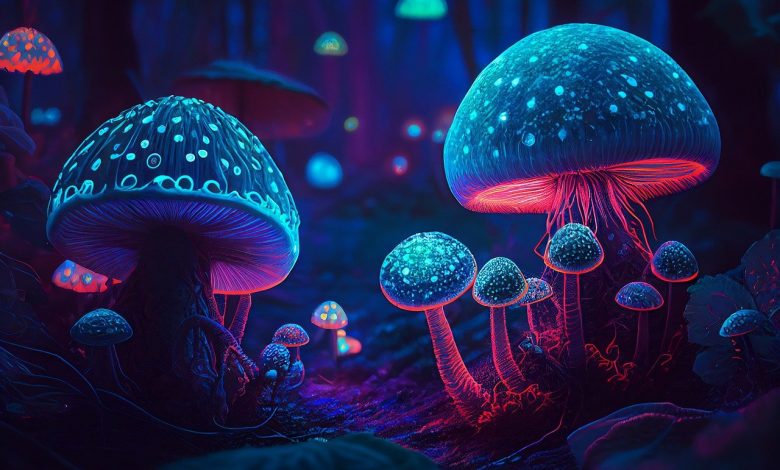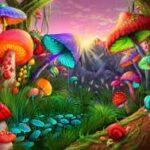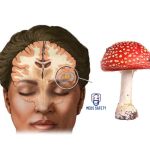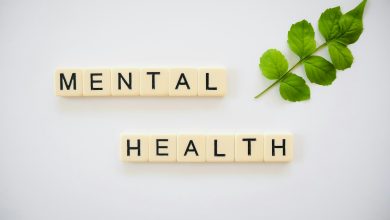How Long Do the Effects of Shrooms Last?

Psilocybin-containing mushrooms, commonly referred to as “shrooms,” have fascinated and intrigued humanity for centuries due to their psychedelic properties. These unique fungi can induce profound alterations in perception, cognition, and emotions.
“Shrooms,” have demonstrated potential health benefits in clinical research and therapeutic settings. Studies suggest that the psychoactive compound psilocybin can be effective in treating conditions like depression, anxiety, and post-traumatic stress disorder (PTSD). It is thought to work by promoting new neural pathways, facilitating emotional processing, and enhancing self-reflection. While more research is needed, these findings have ignited interest in the therapeutic use of shrooms and their potential to offer a novel approach to mental health treatment. However, it’s important to note that the use of shrooms for therapeutic purposes should only be conducted under the guidance of trained professionals in controlled environments due to the potential for intense and unpredictable psychological effects.
For those who choose to embark on a journey with shrooms, a fundamental question often arises: how long do the effects of shrooms last? In this article, we will explore the various factors that influence the duration of a psilocybin trip, including dosage, individual variability, set and setting, and methods of consumption. By the end of this article, you’ll have a clear understanding of what to expect during a shroom trip and how to make the most of your experience.
Psilocybin and Its Effects
Before delving into the duration of shroom trips, it’s important to grasp the basics of psilocybin, the primary psychoactive compound found in magic mushrooms.
1. Psilocybin and Psilocin: Magic mushrooms contain psilocybin, a naturally occurring tryptamine compound that is metabolized in the body to produce psilocin, which is responsible for the psychedelic effects. Psilocin acts on serotonin receptors in the brain, leading to alterations in perception, mood, and cognition.
2. Psychoactive Effects: The effects of psilocybin can vary widely, but common experiences include visual hallucinations, changes in sensory perception, emotional intensity, and profound introspection. Many users report enhanced creativity and a sense of interconnectedness with the world.
Factors Affecting the Duration of Shroom Effects
The duration of shroom effects can vary from person to person and from one experience to the next. Several factors influence how long a shroom trip will last:
1. Dosage: The amount of psilocybin ingested plays a significant role in determining the duration of a shroom trip. Generally, higher doses result in longer and more intense experiences. It’s important to note that shrooms are typically measured in grams, with effects becoming more pronounced as the dosage increases. Common dosages for shrooms range from 1 to 3 grams for a mild trip, 3 to 5 grams for a moderate trip, and 5 grams or more for a strong, potentially long-lasting experience.
2. Individual Variability: Each person’s brain and body chemistry is unique, leading to substantial variability in the duration of shroom effects. Some individuals may experience a shorter trip, while others may have a prolonged experience, even with the same dosage. Factors like metabolism, genetics, and overall health can influence how psilocybin is processed in the body.
3. Set and Setting: The mindset and environment in which a person consumes shrooms play a crucial role in the duration and quality of the experience. A comfortable, safe, and supportive setting can extend the duration of positive effects, while a negative or stressful environment can lead to a shorter, more challenging trip.
4. Tolerance: Tolerance to psilocybin can develop rapidly after a single use. If a person consumes shrooms on consecutive days, they may experience reduced effects on the second day, necessitating a higher dose to achieve the same level of intensity. It’s important to allow time for tolerance to dissipate to fully appreciate the effects.
5. Method of Consumption: The method of consuming shrooms can also influence the duration of the trip. When shrooms are ingested in their natural form, the onset may be slower and the effects may be more prolonged. In contrast, shroom extracts, such as psilocybin capsules or teas, can have a faster onset and shorter duration.
The Timeline of a Shroom Trip
A shroom trip is typically divided into several distinct phases, each with its own duration and characteristics. Understanding this timeline can help users prepare for and navigate their psychedelic journey:
1. Onset (30 minutes to 2 hours)
• The onset is the period after consumption when users start to feel the first effects. It may begin with a sense of euphoria, mild sensory changes, and an altered perception of reality. The duration of this phase can vary based on the method of consumption and individual factors.
2. Peak (2 to 6 hours)
• The peak is the most intense phase of the trip, characterized by heightened sensory experiences, vivid hallucinations, and profound alterations in consciousness. The duration of the peak can vary depending on dosage, but it typically lasts for several hours.
3. Plateau (2 to 4 hours)
• After the peak, users often enter a plateau phase where the effects remain intense but start to stabilize. This phase can last several hours and may include deep introspection and a heightened sense of emotional awareness.
4. Come-down (2 to 4 hours)
• The come-down phase marks the gradual reduction of the trip’s intensity. Users may experience a return to a more typical state of consciousness, although residual effects can persist for some time. The duration of the come-down can vary widely, influenced by individual factors and the dosage taken.
5. Afterglow (Hours to Days)
• Some users report an afterglow effect that can last for hours or even days after the trip has concluded. During this time, individuals often experience enhanced mood, increased creativity, and a sense of clarity and well-being.
Tips for Managing Your Shroom Trip Duration
Whether you’re a seasoned psychonaut or a first-time user, there are several tips you can employ to manage the duration of your shroom trip:
1. Start with a Low Dose: If you’re new to shrooms or want a shorter trip, begin with a low dose and gradually increase it in subsequent experiences.
2. Plan Your Set and Setting: Create a comfortable, safe, and supportive environment for your trip to ensure a positive experience.
3. Be Mindful of Dosage: Understand the relationship between dosage and trip duration, and choose your dosage accordingly to achieve your desired experience.
4. Avoid Redosing: Attempting to prolong a trip by redosing can be less effective due to rapid tolerance development. It’s best to embrace the experience you have during the initial dose.
5. Allow for Integration: After your trip, take time to reflect on and integrate the experience. This can help you make the most of the insights gained during your journey.
6. Stay Hydrated and Nourished: Eating and drinking during the trip can help maintain your energy levels and prevent dehydration.
7. Be Patient: The effects of shrooms can take time to fully manifest. Rushing to take more because you don’t feel the effects immediately can lead to an unexpectedly intense experience.
8. Practice Harm Reduction: Have a trusted friend or sitter with you, especially if you’re inexperienced or taking a high dose. They can help ensure your safety and provide support if needed.
Conclusion
The duration of shroom effects can vary widely based on several factors, including dosage, individual variability, set and setting, and the method of consumption. While some trips may be relatively short and intense, others can be longer and more introspective. It’s essential for individuals to approach shroom use with respect, caution, and an understanding of these variables to make the most of their psychedelic experiences.
Before embarking on a shroom journey, it’s crucial to research, plan, and prepare to ensure a safe and positive experience. By considering these factors and employing the tips mentioned in this guide, individuals can navigate their shroom trips with confidence and mindfulness, ultimately gaining valuable insights and personal growth from their experiences.





